Southeast Asian food encompasses a tremendous spectrum of flavors and traditions. This region features a staggering level of cultural diversity.
Centuries of migration, both forced and voluntary, as well as colonialism and international trade have made this area a true melting pot. All of that is reflected in the cuisines here, many of which draw heavily on diasporic influences.
One thing is certain: all of this gastronomic evolution has resulted in some of the most delicious cuisines in the world. Here are just a few of the many specialties to try in Southeast Asia.
Pad Thai
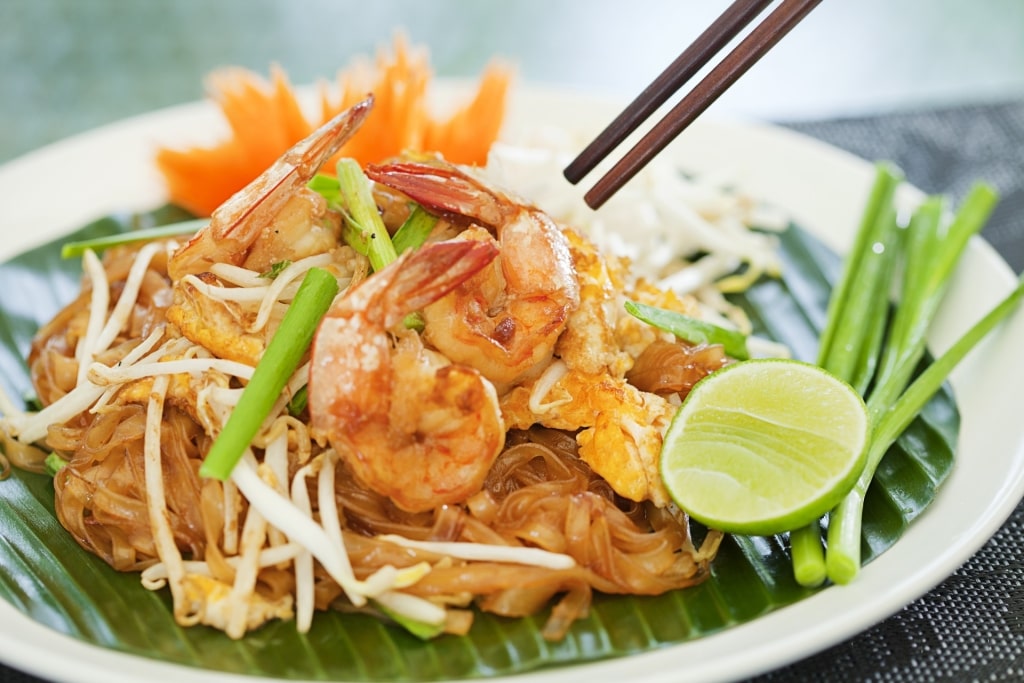
Pad thai
The most famous culinary export that Thailand is known for is a rare positive result of nationalism. During the 20th century, prime minister Luang Phibunsongkhram decreed that the country needed a national dish.
Innovative cooks added the classic Thai balance of sweet, sour, and umami flavors to the stir-fried noodles brought over by the country’s southern Chinese diaspora. Palm sugar adds a nuanced sweetness; tamarind adds tang; and dried shrimp and fish sauce bring the umami.
Pho
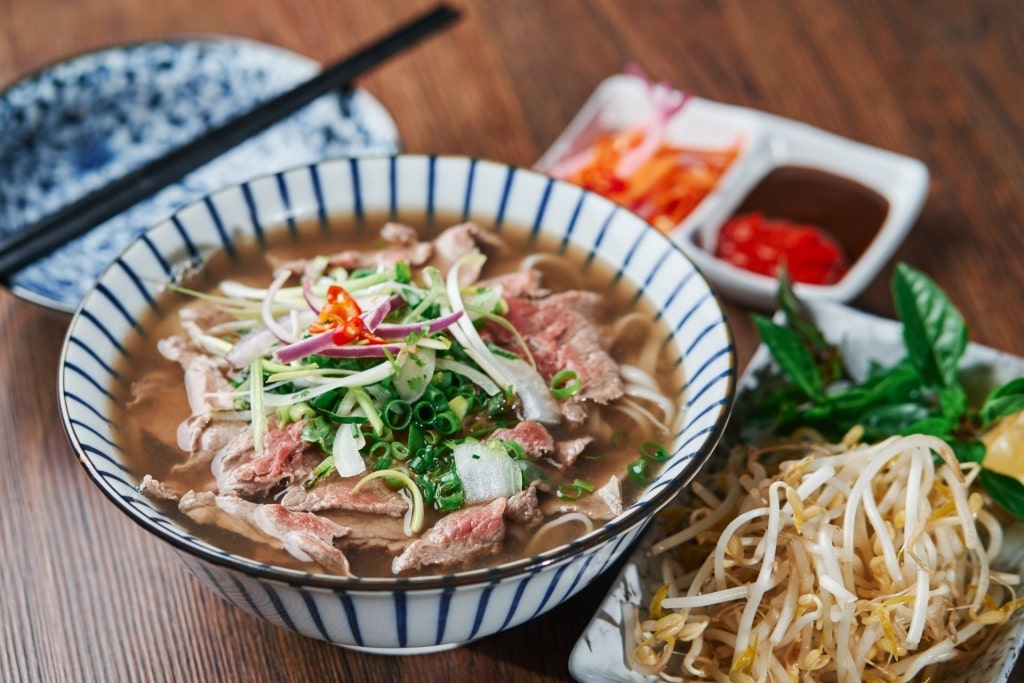
Pho
No one knows the precise origins of the noodle soup that Vietnam is known for, but most food historians believe it originated in Hanoi around the late 19th or early 20th century.
Many have speculated that it grew partially out of pot-au-feu, France’s national dish of braised beef. Today, pho is eaten all over Vietnam, although key differences exist between northern and southern styles.
The former is more austere, with nary a garnish in sight to distract from the rich, flavorful broth. The latter ups the ante with bundles of fresh herbs, bean sprouts, and condiments. Note that while some restaurants will serve pho all day, it’s traditionally breakfast or lunch fare.
Nasi Lemak
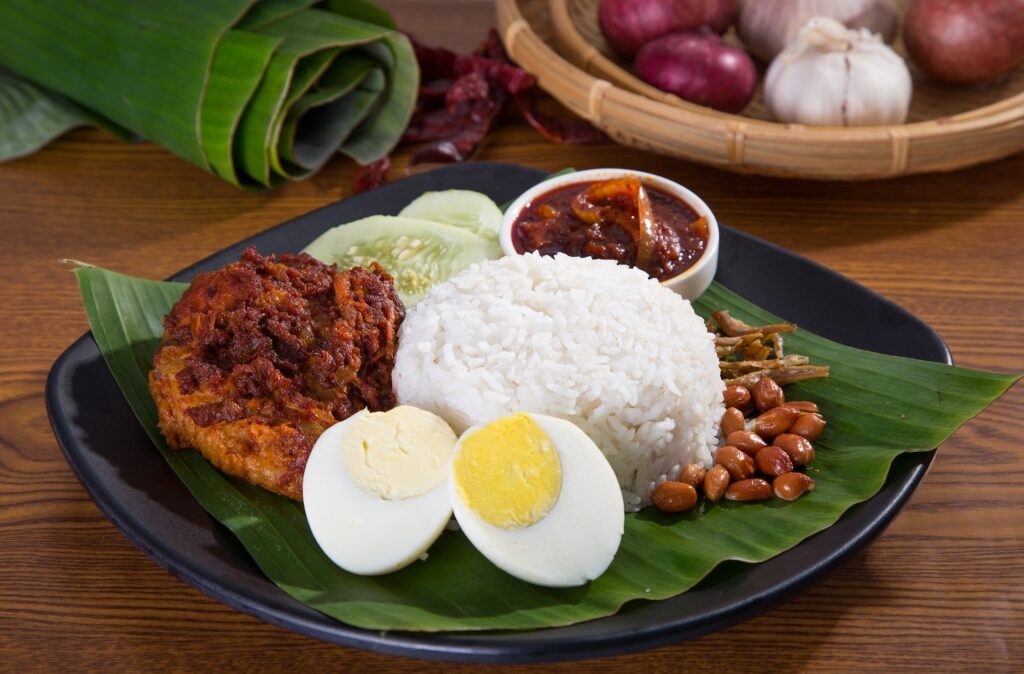
Nasi lemak
Malaysia’s national dish has to be one of the single greatest ways to start your day. Each plate consists of a mound of coconut rice cooked with fragrant pandan. Garnishes include sliced cucumbers, a hard-boiled egg, sambal, fried peanuts, and ikan bilis, or dried anchovies.
From there on, cooks have a fair amount of license to get creative. Sauteed squid or other proteins may be added to the mix. What makes nasi lemak such a pleasure to eat is the combination of distinct flavors and textures. While the dish is distinctly Malay in origin, it can be found throughout Singapore and other parts of the region.
Read: The Ultimate Kuala Lumpur Food Guide
Laksa
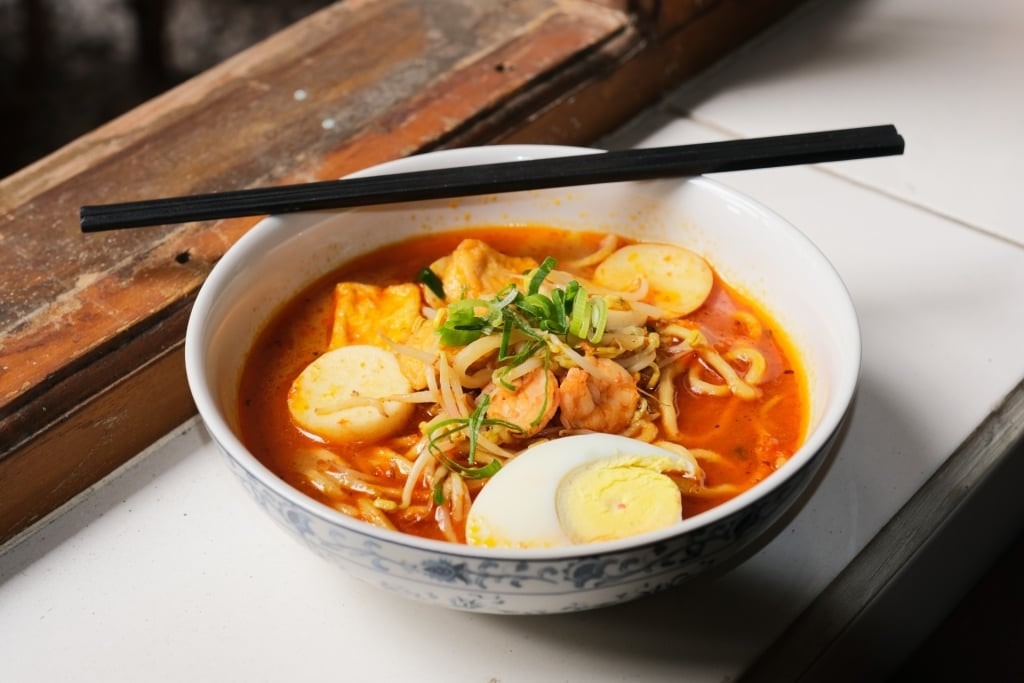
Laksa
Ask a dozen different cooks around Malaysia and Singapore who makes the best laksa and you’ll get a dozen different answers.
This noodle soup, which both Malaysia and Singapore regularly claim as their own, is as beloved as it is divisive. The dish, which has Peranakan roots, consists of a richly spiced coconut broth, usually with thick rice noodles. Dozens of regional variations abound, but a sambal made with ultra-savory shrimp paste is usually key to the base.
Tamarind, candlenuts, turmeric, torch ginger, and other ingredients may add complexity to the broth, which often gets topped with prawns, squid, or other seafood.
Satay
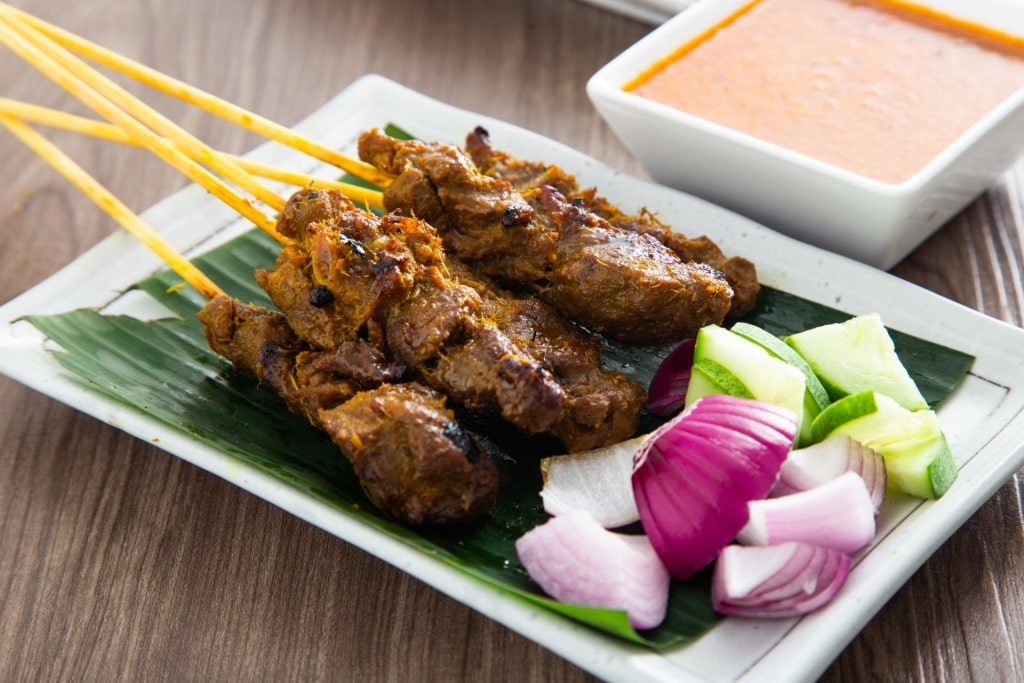
Satay
With their turmeric-tinted golden coloring and caramelized exterior, these addictive meat skewers are hard to stop eating.
Variations exist throughout Southeast Asia, although the dish is most commonly associated with Indonesia, Singapore, and Malaysia. The meat in question may be chicken, beef, or pork, depending on whether the community in question keeps halal.
What sets satay apart is the rich, sweet marinade, which often contains tamarind and coconut milk. A chunky peanut sauce on the side is perfect for dipping.
Read: The Ultimate Bali Food Guide
Hainanese Chicken Rice
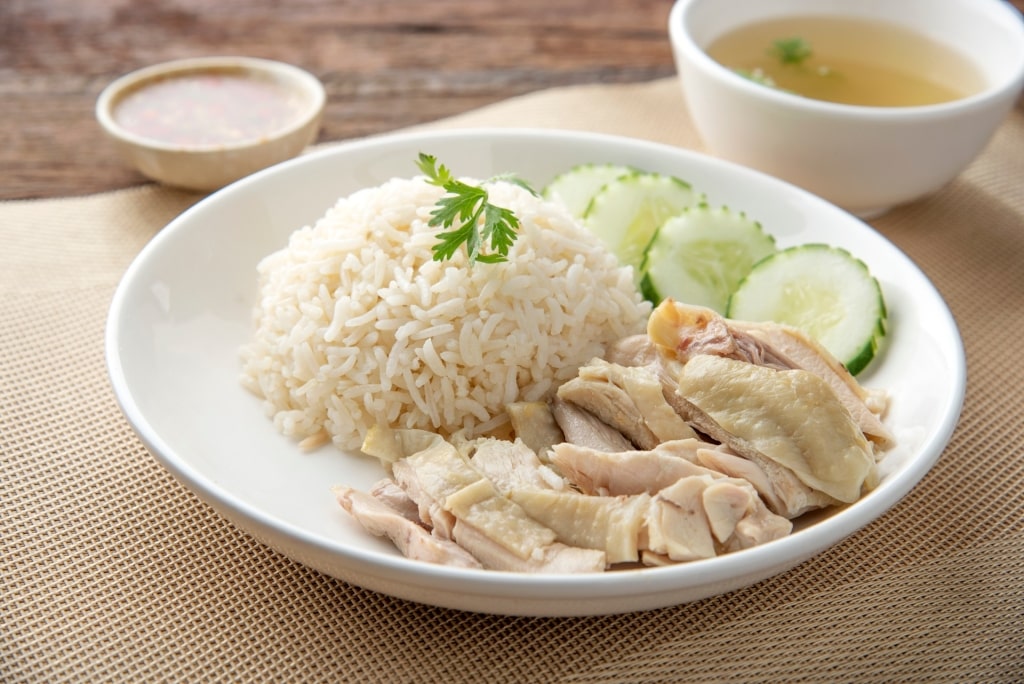
Hainanese chicken rice
Don’t let the beige-on-beige appearance of this rice dish, served all over southeast Asia, fool you. This deceptively simple dish consisting of rice topped with sliced, poached chicken is full of flavor. The allure lies in the subtly contrasting textures—the gelatinous skin, the moist meat, the chicken fat-slicked grains of rice. A zingy soy-ginger dipping sauce adds a kick.
Because there are so few ingredients, the details are everything here. The best versions are made with free-range Wenchang chickens. As the name implies, Hainanese chicken rice has its roots in southern Chinese diaspora communities. Excellent versions can be found throughout much of Southeast Asia.
Read: Best Food in Singapore
Green Curry
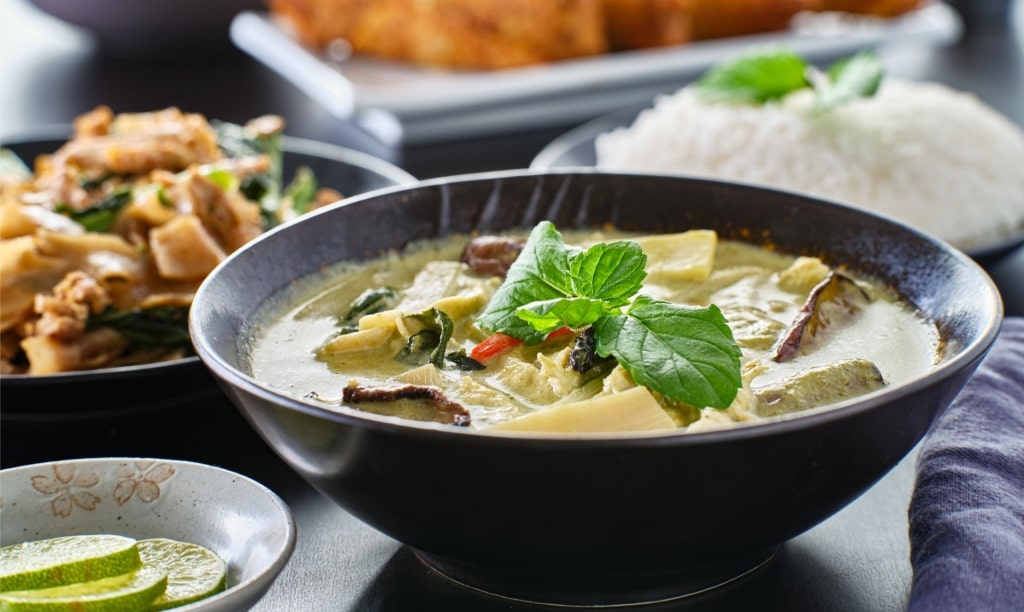
Green curry
Thai curry is a broad term that can refer to dishes ranging from fiery, sour fish curries in the south to braises rich in dry spices towards the north. Of the many, gaeng keow wan gai, green curry with chicken, is perhaps the most ubiquitous.
This relatively mild, coconut-based curry is made with bone-in chicken, bamboo shoots, and tiny eggplants, among other vegetables. Traditionally, wobbly, savory cubes of pork blood are added. If you’re not familiar with eating blood, don’t worry—it’s delicious and adds a deeply savory note to the dish.
Bánh Mì
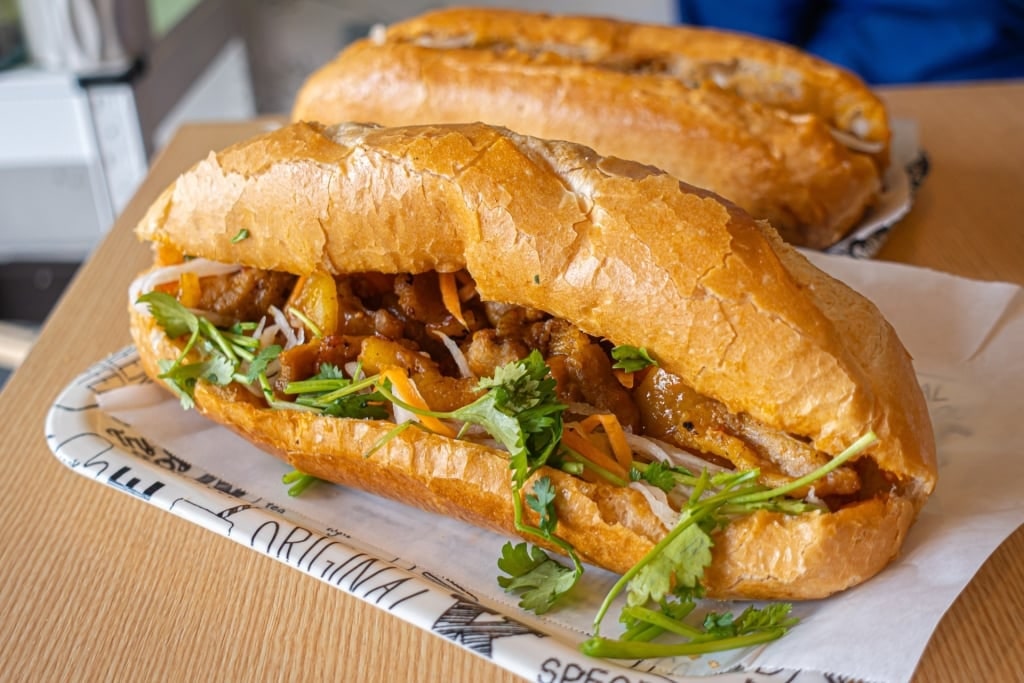
Bánh mì
Born out of French colonialism, this Vietnamese sandwich is one of the greatest examples of fusion food. When the French brought cold cuts and baguettes to Vietnam, the combination quickly took off. But it wasn’t until the mid-20th century that Vietnamese cooks began to improvise with other ingredients.
Today, the bread for bánh mì is fluffier on the inside than a baguette, with a sturdy, crackling crust. It needs to be able to stand up to a hefty array of cured meats, condiments, pickles, and herbs.
Khao Soi
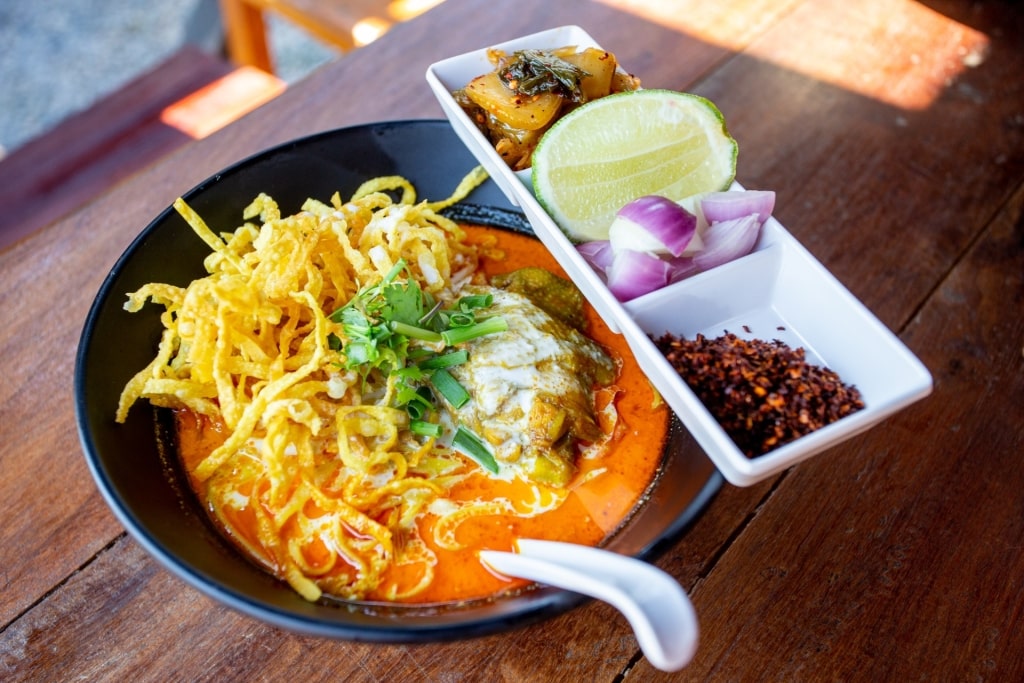
Khao soi
Northern Thailand’s iconic noodle dish is a study in textures. Springy egg noodles swim in a creamy, coconut curry broth and are topped with crispy, fried egg noodles.
Because this dish originated within the area’s Muslim communities, the protein of choice is bone-in braised chicken or beef. The use of turmeric, cumin, and other dried spices is common in Burmese and Northern Thai cooking. Because this dish is on the richer side, tangy pickled mustard greens help cleanse the palate.
Amok Trei
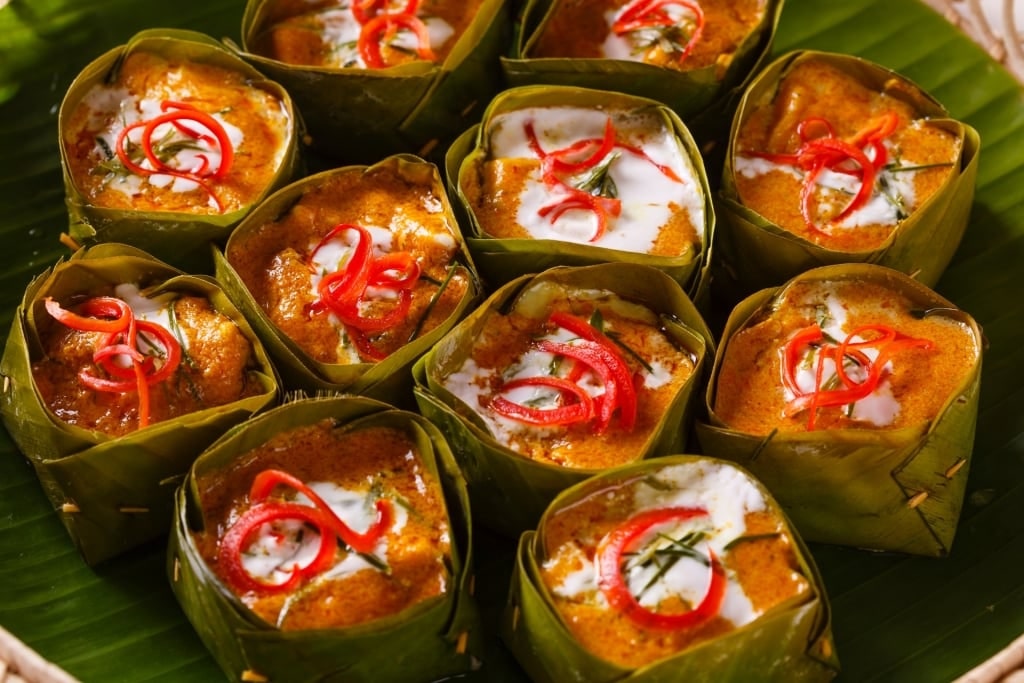
Amok trei
Fish amok is a lush, creamy Cambodian dish with roots stretching back to the mighty Khmer Empire. Traditionally made with snakehead fish, an oily-fleshed, river-dwelling species, it’s now made using all sorts of fresh and saltwater fish.
The fish is pounded into a mousse with aromatics and coconut cream, then steamed to produce a custardy texture.
Beef Rendang
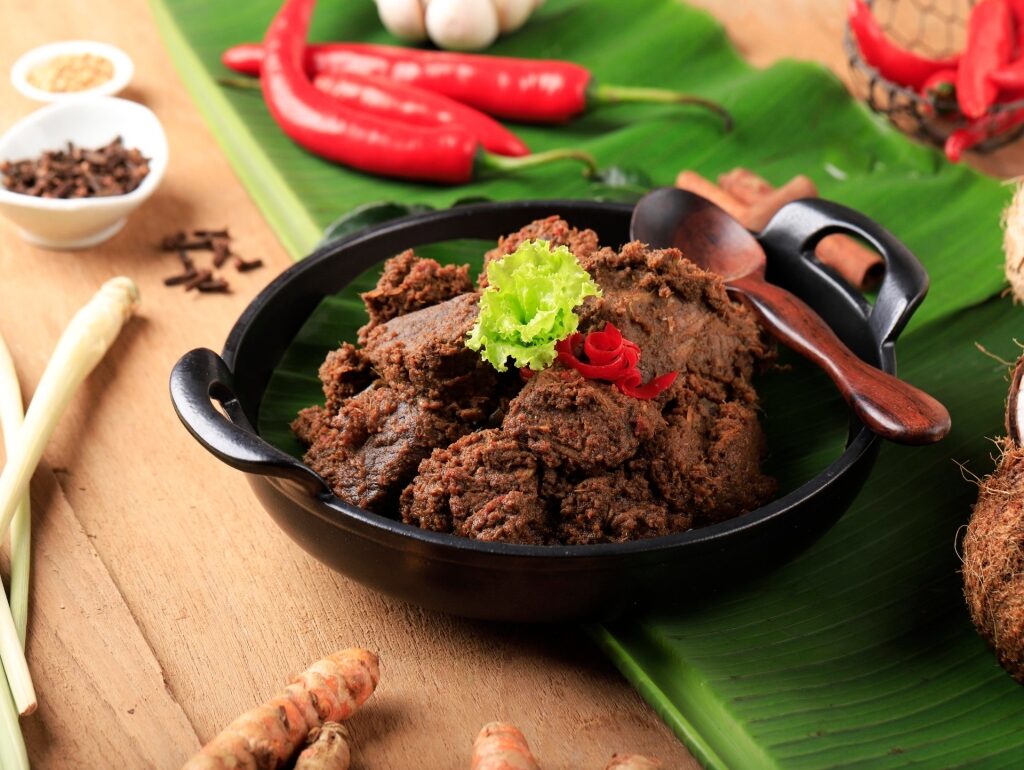
Beef rendang
This sumptuous Indonesian dish is almost an exact inversion of most Western European stewed meats. Rather than call for searing the beef before simmering, in rendang, the cook simmers the beef for hours until the spiced coconut milk reduces.
Once all of the other liquid has evaporated, the beef then fries in the remaining coconut fat. The result is fragrant, complex, and luxuriously rich, with meat tender enough to eat with a spoon. This is slow food at its finest, as a proper rendang takes hours to make.
Gado-Gado
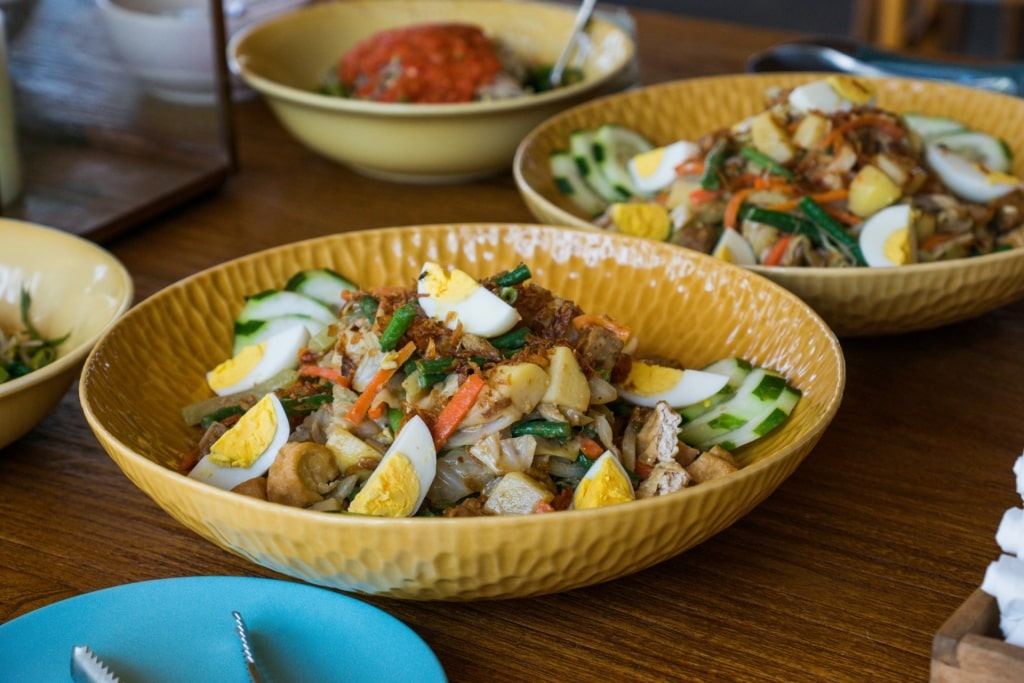
Gado-gado
This Indonesian salad is very much a meal in and of itself. Although it’s especially prevalent throughout the Asian island of Java, it’s found just about everywhere in Indonesia.
Gado-gado can be made with all sorts of raw and blanched vegetables. Fried tempeh, hard-boiled eggs, and boiled potatoes are often added to provide heft. What really defines gado-gado is the dressing, which is typically a slightly chunky peanut sauce.
Tom Yum Goong
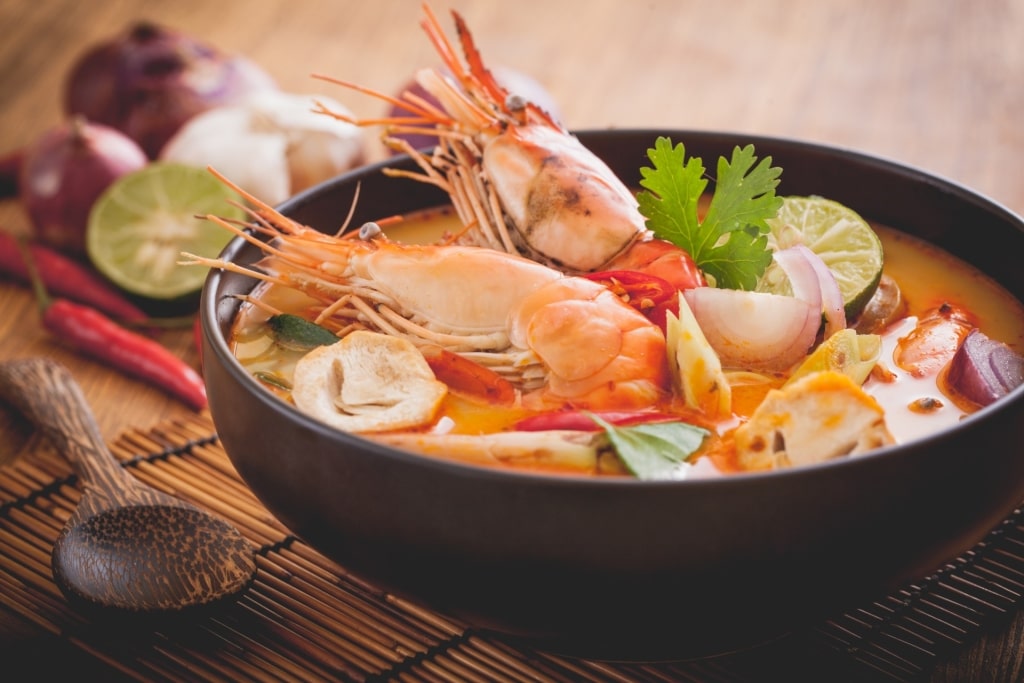
Tom yum goong
Trepedatious eaters may wish to sip this soup with caution, as it’s often one of the more fiery dishes on a typical Thai spread.
Once the chile heat subsides, a whole host of other flavors wash over the palate. Tom yum goong is typically features a potent seafood stock perfumed with lemongrass, galangal, makrut lime, then enriched with coconut milk. Pricier versions of the dish will often feature large, head-on prawns, squid, and other top-notch seafood.
Mie Goreng
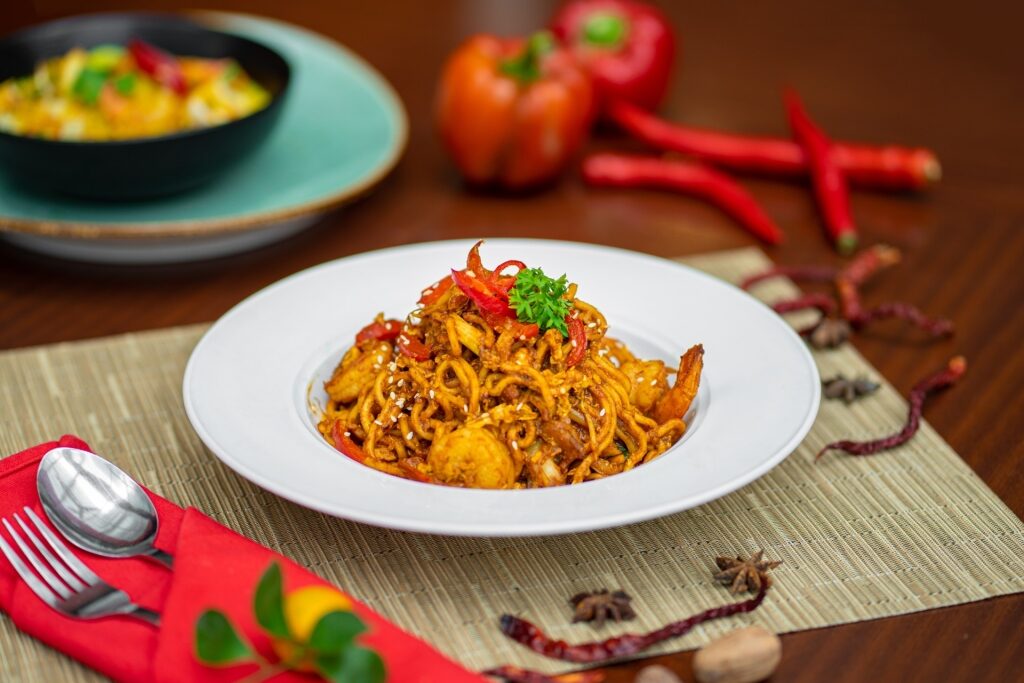
Mie goreng
These glossy noodles are quintessential hawker fare. Although they hail from Indonesia, versions of them are found in Malaysia as well.
Mie goreng is more a loose concept than a codified recipe, with different cooks putting their own spins on the dish. Prawns, chicken, beef, squid, and other proteins can all be added. Any time of yellow egg noodle may be used, although “Mama” noodles—instant ramen—are often the go-to.
Char Kway Teow
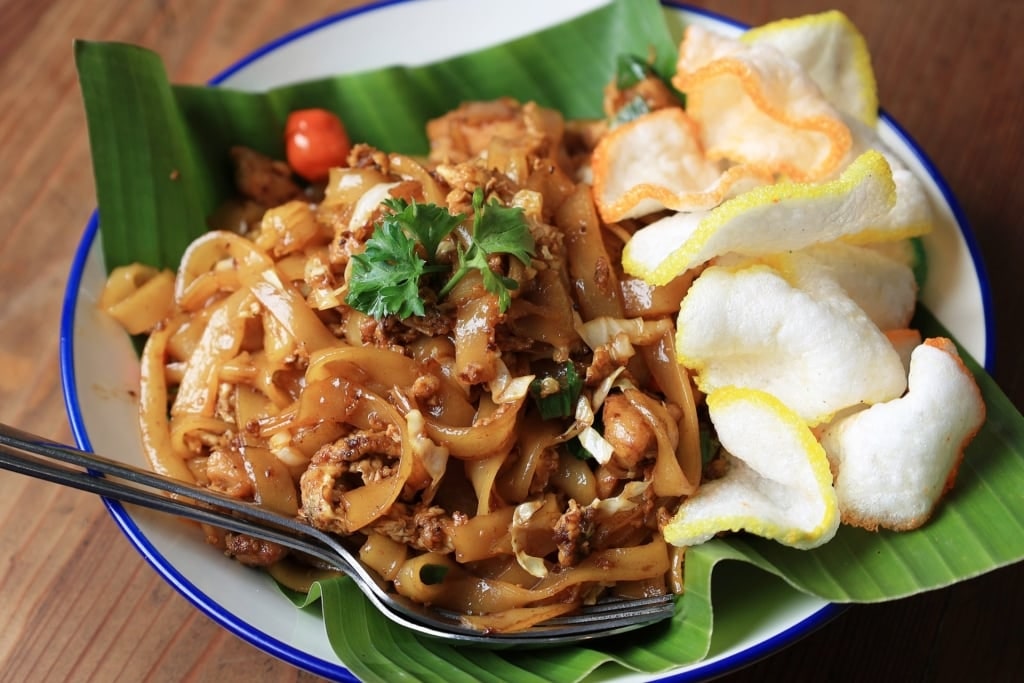
Char kway teow
Much like pad Thai, this classic Malay dish most likely evolved out of stir-fried noodle dishes brought to Malaysia by Chinese immigrants. Over generations, the dish evolved to suit local palates. It became popular when fishermen started selling it during their evenings as a way to offload some of their catch of the day.
Order up a plate at a hawker center today and you’ll get a tangle of stir-fried rice noodles with bean sprouts, Chinese sausage, and usually prawns or squid. This is very much a more-is-more dish and many vendors will add blood cockles, fishcakes, and other seafood.
Read: The Ultimate Penang Food Guide
Som Tum
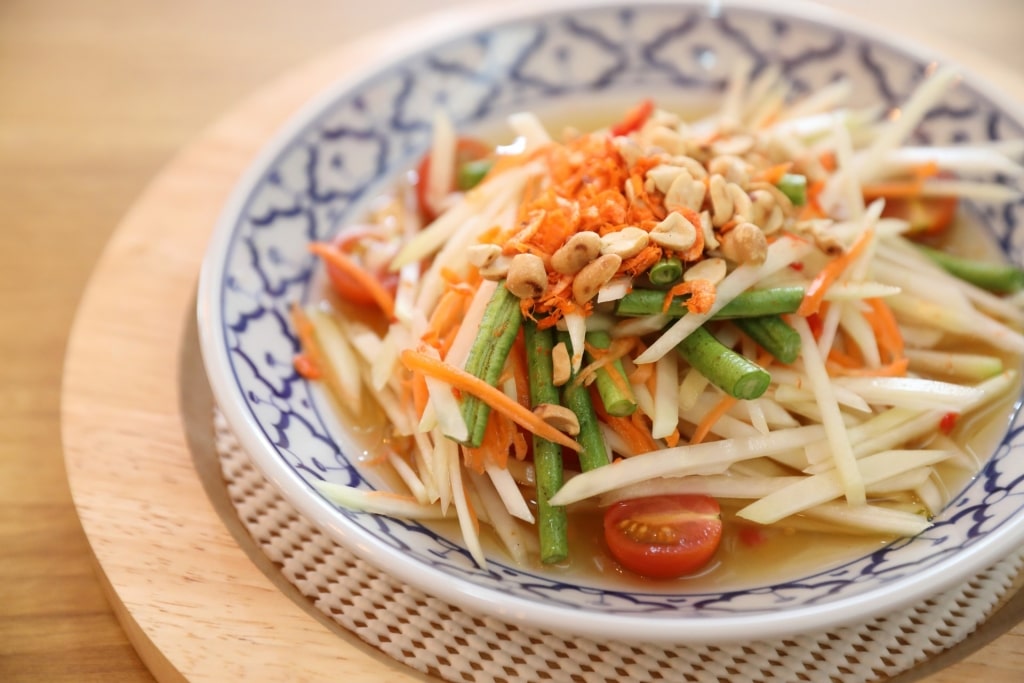
Som tum
Perhaps no dish better exemplifies the classically Thai balance of sweet, spicy, sour, savory, and umami flavors. The most common variation of som tum consists of shredded unripe papaya, long beans, cherry tomatoes, dried shrimp, and crushed peanuts. A dressing made with lime juice, fish sauce, palm sugar, and bird’s eye chiles binds it all together.
Countless other variations exist, including som tum made with mango, carrots, corn, and all sorts of fruits. Som tum poo, a popular variation, includes small fermented river crabs. Northern-style som tum, which is similar to the variety found in Laos, typically has the powerfully savory, funky note from fermented fish sauce.
Nasi Goreng
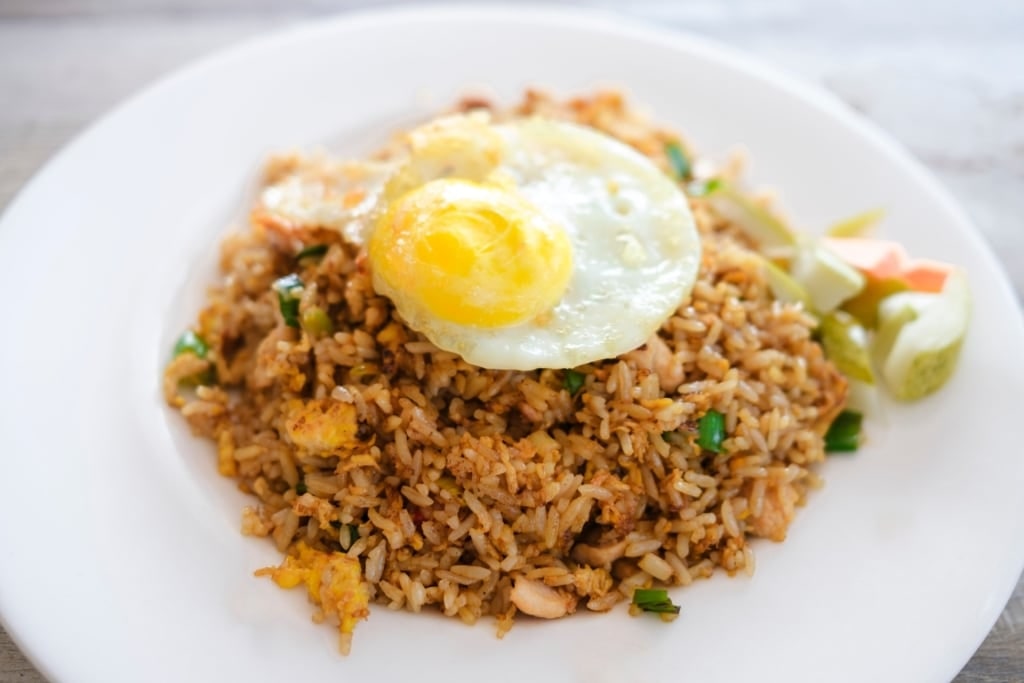
Nasi goreng
Nasi goreng is often considered Indonesia’s national dish, yet there’s no hard consensus on the right way to make it. Instead, recipes vary immensely from cook to cook. High-end restaurants serve elaborate versions, while home cooks whip up simpler ones on weeknights.
Most food scholars believe that its roots lie with Chinese laborers, who brought fried rice with them to Indonesia. As time wore on, ingredients like shrimp paste and kecap manis, or sweet soy sauce were added. There are currently more than 100 documented variations. Turmeric, fried shallots, chile paste, or even ketchup may be added, depending on where you are.
Cendol
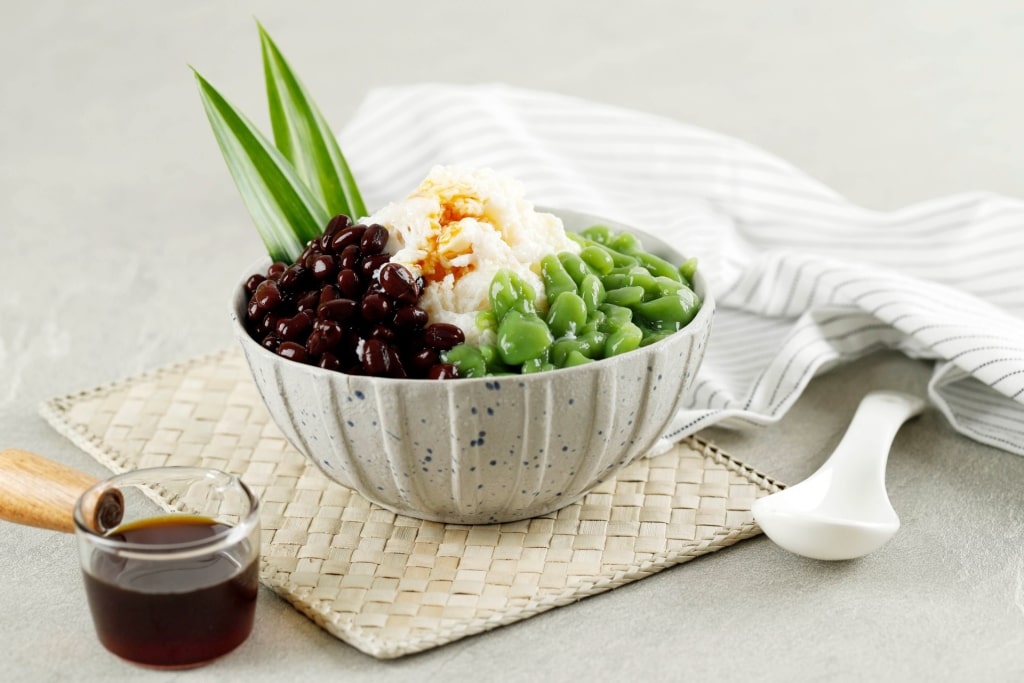
Cendol
Made with pandon-infused rice jellies, cendol resembles nothing more than a bowl brimming with neon-green squiggles. It’s also a terrific way to cool off in sweltering subtropical temperatures.
Although it most likely was first invented in Indonesia, variations of this dessert are extremely popular in Malaysia and throughout the region, from Singapore to Vietnam. A typical bowl contains a base of coconut milk, often with jaggery syrup, and ice to keep everything nicely chilled. Toppings vary enormously, but may include jackfruit, sweetened red beans, grass jelly, and durian.
Bún Chả
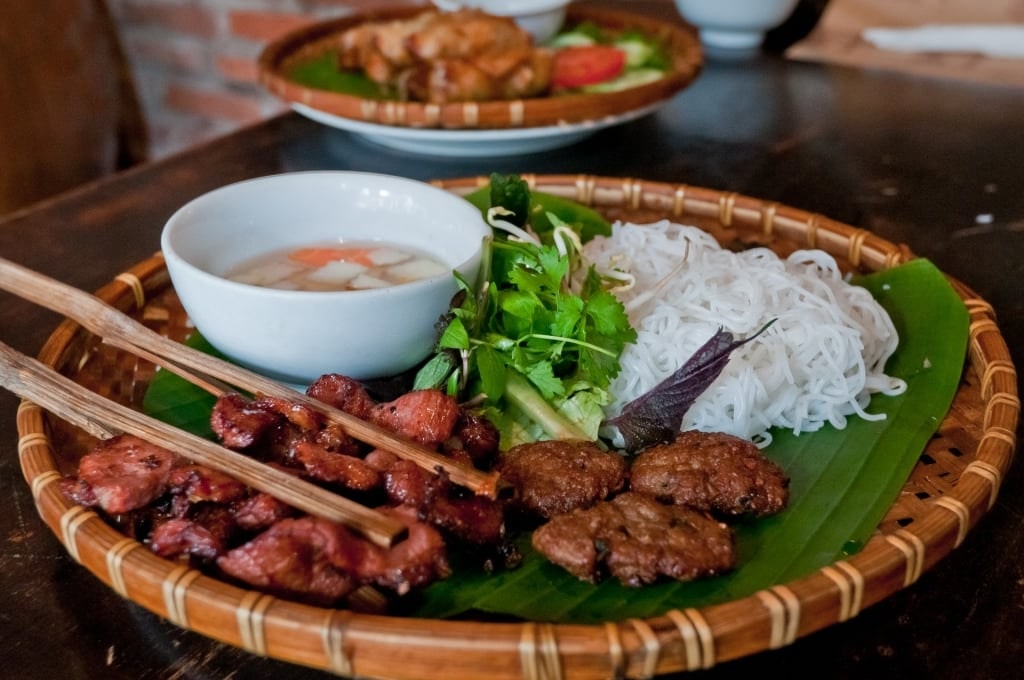
Bún chả
When the U.S. President Barack Obama visited Hanoi, Vietnam, he famously met up with Anthony Bourdain for a bowl of bún chả.
Much like pho, this Vietnamese dish probably originated in the northern capital, but can be found all over the country.
A bowl of bún chả comes loaded with skinny rice vermicelli, grilled pork, pork meatballs, pickles, and loads of herbs. All of those fresh ingredients, coupled with the acidity of the dressing, help balance out the richness of the fatty pork, making for a very satisfying meal.
Roti Canai
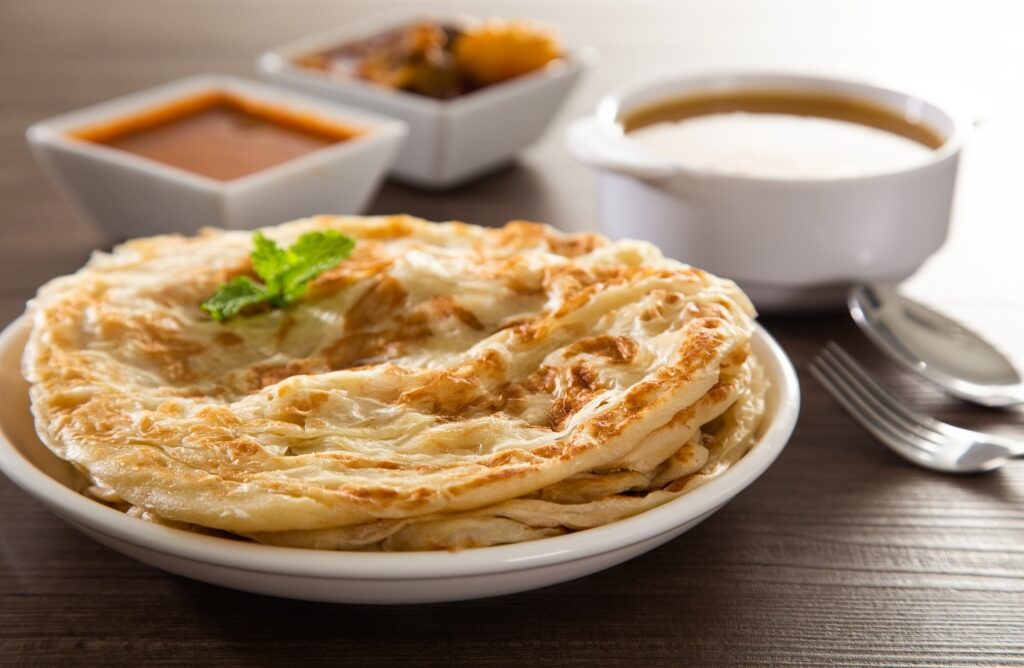
Roti canai
This flaky flatbread’s roots stretch all the way back to the Indian subcontinent. To make it, cooks brush the unleavened dough with ghee, margarine, or oil, then reroll it. When griddled, the fat separates the bread into wafer-thin layers.
Roti canai is often served alongside savory curries for dipping. It’s most commonly associated with Malaysia, but versions are common throughout Thailand, Singapore, and Indonesia as well. Sweet variations are also common. Order a roti pisang in Malaysia and it’ll arrive topped with sliced bananas and drizzled with sweetened condensed milk.
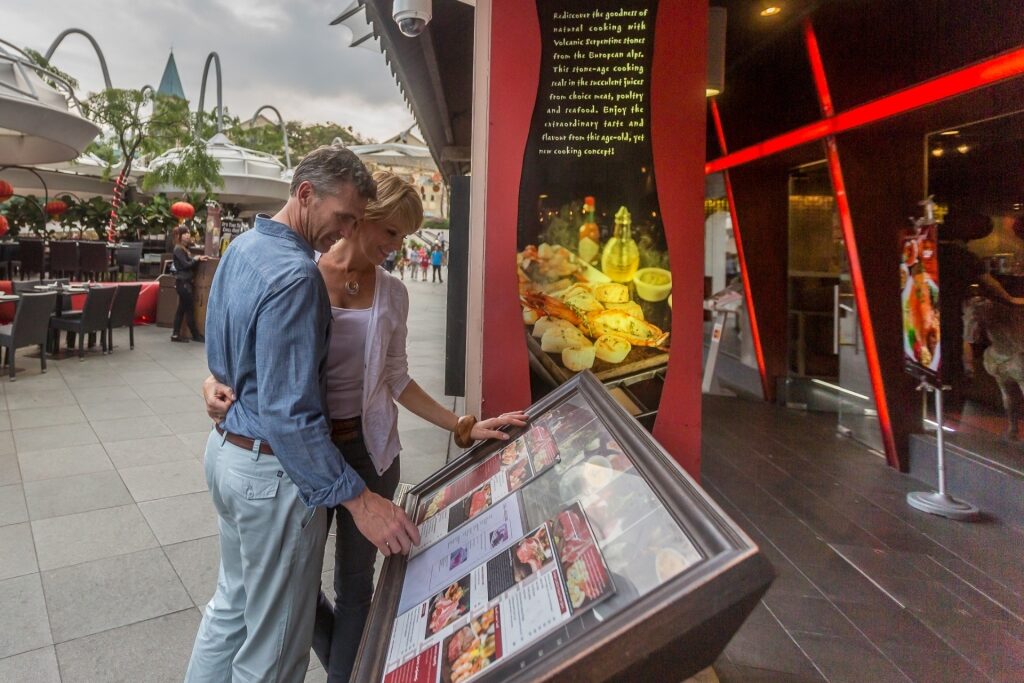
Singapore
By far one of the best ways to explore Southeast Asia’s many delicious destinations is aboard a cruise with Celebrity. Explore our Southeast Asia cruises to Thailand, Indonesia, Singapore, Malaysia, and Vietnam to book your next voyage today.



